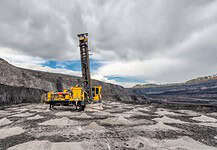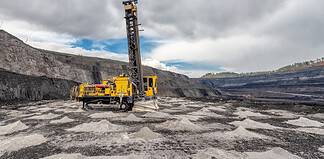THE mining industry places structures in some of the harshest conditions in Australia.
Underground mining and surface process plant infrastructures are subjected to a broad range of conditions including low and high temperature, vibration, humidity, corrosion from acids and slurries including exposure to many aggressive chemicals and direct heavy impact from normal operating activities.
While construction of steelwork to the appropriate standard gives assurance that it is fit for purpose when it is newly constructed and installed, the aggressive nature of the operating environments and the variability of the conditions on mine sites will most certainly guarantee that degradation and deviation from design strength will take place over the operating life.
The humble guardrail is a safety-critical part of this infrastructure.
It provides peace of mind when we venture up or down a stairwell or onto a platform.
It is usually not given a moment’s thought when we lean against it for support and it is taken for granted that it will not fail.
In 2009, Perilya Broken Hill Ltd identified a need for the development of an effective quantitative condition assessment technique for this safety critical infrastructure component, engaging Rosetta Stone Operations to design and manufacture a suitable testing apparatus.
Appendix B of AS1657 was adopted as the technical basis for the design of an apparatus suitable for testing new and existing guardrails.
The Test-A-Rail
The Test-A-Rail apparatus is the result of a series of problem-solving sessions with a range of stakeholders.
The tester is lightweight and can be easily carried up stairways and onto typical platform locations.
The tester is attachable to Johnsway meshes, chequer plates, cement floors and walkways. Anchoring to various floor materials and profiles is by hook bolts, magnetic base or vacuum foot.
The aluminium testing frame is combined with a standard hydraulic actuator and load measurement gauge.
The tester establishes a baseline result and a quantitative test procedure that is non-destructive and reproducible.
Routine tracking of test records can readily identify gradual strength reduction in a quantitative manner that can be tracked over time.
The Test-A-Rail can identify guardrails that require repairs and confirms those that are still fit for purpose at the time of testing.
The tester allows for the application of non-simultaneous horizontal and vertical test loads to rails and posts, and any resulting deflections can be measured.
A load-deflection chart supplied with the tester provides a guide for the allowable deformation of the guardrail system. The tester is easy to use, accurate and the test data is recordable
The test records establish a ‘condition criteria’ that determines and prioritises maintenance response and provides the necessary insight to identify unacceptable guardrail designs or installations and predict unacceptable guardrail degradation at a specific location.
The testing process has six simple steps:
- Anchor the testing frame to the floor
- Adjust the loading cylinder in position over the rail to be tested
- Operate hydraulic hand pump until the correct cylinder pressure and rail loading is achieved
- Hold this loading for 60 seconds and then release the hydraulic pressure
- Measure any permanent rail deflection using a straight edge
- Establish if any permanent deflection falls within the limits of the load-deflection chart provided. If the deflection is out of range, the rail is deemed to have failed and must be repaired or replaced.
The failure of a guardrail and the fall of an employee from height will result in significant injury.
The avoidance of only one such incident will justify the effort and expense of developing and implementing a guardrail condition testing system.
Can you afford not to test?
More information:
Website: www.handrailtester.com
Phone: +61 417807371
Email: [email protected]









































